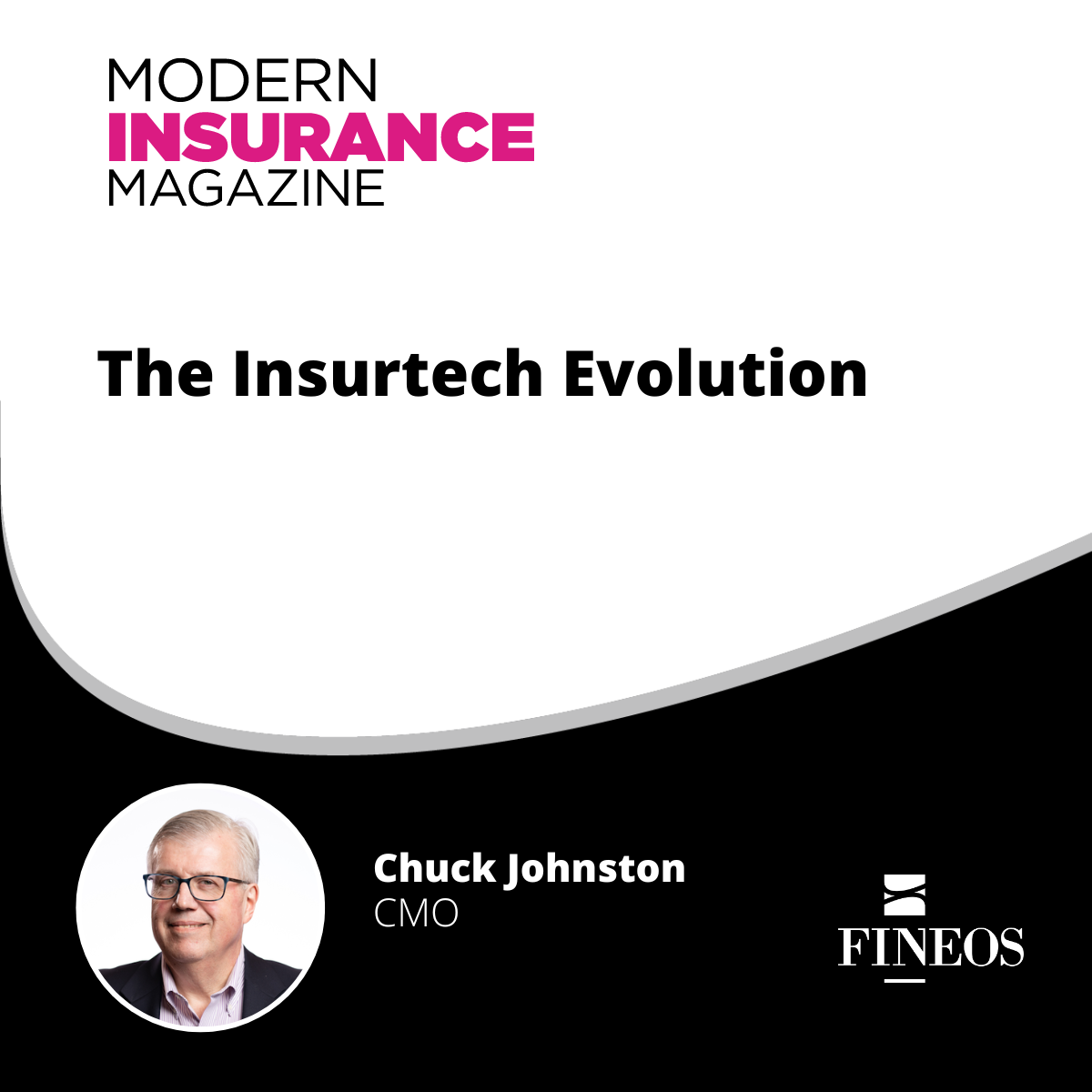Article originally appeared in Advisor Magazine June 2021
In the past year, there has been more discussion about digital transformation in the life, accident, and health insurance industry than ever before. The COVID-19 pandemic made digital capabilities more crucial and the market far more fast-paced than in prior years.
Carriers are looking for new ways to accelerate simplifying their processes in order to keep up with the rapidly evolving market. Embracing modern technology is the best way they can achieve this. By leveraging data and implementing cloud systems, carriers can simplify processes both within their organization and for their end customers.
What Is Driving The Need For Life Insurance Carriers To Modernize?
Low interest rates as well as new money and entrants coming into the life insurance market have been key factors over the past decade driving carriers to look for lower cost, higher margin ways to run their operations. But the COVID-19 pandemic was an immediate and sudden shift that required every carrier, nearly overnight, to begin operating in an entirely new way that many would have previously thought impossible. It also made many carriers begin to evaluate the reality they would face if they continued using siloed legacy systems.
As the market matures, more data will become available, and more carriers will need to move from on-premise legacy systems to true cloud-based SaaS systems in order leverage this data. The carriers that don’t evolve along with the rest of the market will be left with more costly products and inefficient operations that make it difficult, or impossible, for them to remain competitive.
In addition, consumers are continuing to get more tech savvy, and younger generations that have grown up with technology at their fingertips have different expectations for digital capabilities. As these consumers begin looking for life insurance products, the way in which they engage, purchase, and manage products will be different from past generations. Being able to provide a more modern digital experience for their customers is a major factor driving the need for life insurance carriers to embrace cloud systems.
Leveraging Cloud Systems and Data Can Simplify Processes
Insurers using cloud-based products, which are API-driven, can work in a more efficient way while leveraging data across multiple systems for use with product creation. These modern systems allow data to flow seamlessly between different business units, preventing siloed workflows and time-consuming tasks like entering data multiple times in different systems. This allows the carrier’s employees to spend their time on more strategic, higher value tasks and to develop new approaches to identifying, creating, underwriting and managing risk.
With agile cloud-based systems in place, carriers can respond more quickly to market, regulatory, and other changes. It’s all about speed to market, and the ability to adapt in an ever-shifting industry is crucial. Configurable cloud-based solutions allow carriers to make changes in a matter of weeks, as compared to legacy systems which take months or even years to implement those same changes.
As costs decline and data processing capabilities increase, a number of processes that are currently done manually will be able to become automated in cloud-based systems. This will make for quicker turnaround times and faster processing for policy management, claims adjudication, quote creation and billing. In order to take advantage of these benefits as technology advances, carriers will need to have modern core systems in place.
Modern Systems Create A Better Customer Experience
Both carriers and consumers benefit when carriers use data driven solutions. Freeing up more staff time by simplifying processes means that employees can focus more time on responding to customer requests and providing better customer service. Quicker turnaround times on quotes and claims also result in higher customer satisfaction.
As mentioned, today’s consumers are beginning to demand a more robust digital experience from insurers. Leveraging cloud-based systems and data to deliver a user-friendly, modern digital experience for customers can improve customer satisfaction. By making their life insurance benefits easier to use and understand, a more positive experience is created for customers which can result in greater customer loyalty.
What Steps Should Life Insurance Carriers Take If They Are Interested In Moving To Cloud Systems?
Making a systems change from legacy to cloud is a huge transition and, unfortunately, often an unsuccessful one if approached the wrong way. To ensure the transition goes smoothly, it’s best for carriers to pick one specific line of business, one product, and one unit with which to begin the migration.
Carriers can see what they learn from making that shift and after they’ve got some successes under their belt, then move on to the next. By taking it in small chunks and getting some early wins, they will be able to present those use cases to get more buy in from stakeholders at every level of the organization.
Being very clear about the success criteria from the beginning of the transition and identifying objectives will also help to prevent lost time, money and frustration. If everyone involved in the implementation has a clear roadmap from the start, it’s much easier to stay on course and realize early on if they’ve veered away from it.
It’s also important to gauge and monitor ‘scope creep’ diligently. Many transformation programs run over time and budget, then end up not going to production simply because the scope of the project wasn’t diligently managed. Scope creep allows features that one would expect to have in a perfect world to be introduced too early in the process. Having an agile coach to help the teams learn to manage this process can also be a huge benefit.
The Future Of The Industry Means Carriers Should Be Taking Action Now
Life insurance carriers looking to the future can expect to see artificial intelligence (AI) and machine learning (ML) increasingly utilized to make processes more efficient. For example, benefit prediction will likely evolve into systems which can automatically examine a block of business, run data models over a number of factors, and determine an individual or company’s risk profile.
For claims adjudication, future software will be able to utilize diagnosis codes, RX codes, and predictive analytics when processing a claim. We’ll also see models run on getting employees out on disability back to work more quickly by supporting their health and recovery, which ultimately reduces claim costs.
Because of the highly advanced technology ahead which will one day become standard, carriers need to begin adopting cloud-based systems and leveraging data now to prepare. SaaS core systems with modern APIs will allow carriers to remain competitive and compatible with new industry standards as they continue to evolve.


